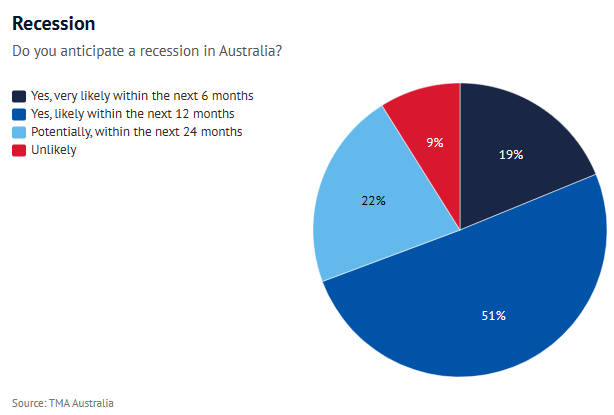Australia is tipped to enter a recession over the next 12 months, increasing the rate of company insolvencies as firms struggle to absorb higher interest rates, costs, and weaker consumer spending.
According to The SMH, up to 70% of insolvency practitioners, lawyers, managers, and corporate debt restructuring specialists surveyed by KordaMentha and Turnaround Management Association (TMA) anticipate a recession will occur within the next 12 months.
Around 90% of insolvency sector specialists polled anticipate the economy will enter a recession over the next two years:

According to ASIC, corporate insolvencies increased by 62% in the year to June, reaching its highest level since 2018-2019. 7943 companies appointed administrators, liquidators, or receivers in 2022-2023.
The Australian Financial Security Authority also reported that personal bankruptcies increased sharply in May, jumping to 1031 from 769 the month prior.
“Now rising interest rates and inflation with resulting cost increases are causing a drop in discretionary spending and profitability. So many borrowers have been forced to the secondary, more expensive money market”, James Wagg, KordaMentha executive director of performance improvement said.
“Construction was the first industry to be affected, unable to pass on rising costs due to fixed-price contracts”.
“We are now seeing other industries affected, like retail impacted by increased cost of living and reduced consumer spending”.
“The next are likely to be services industries such as health as government funding fails to keep up with increasing costs. It’s trickling through the economy”, Wagg said.
So, we are looking at a recessionary bust for Australian businesses, but a boom for firms operating in the insolvency space.

